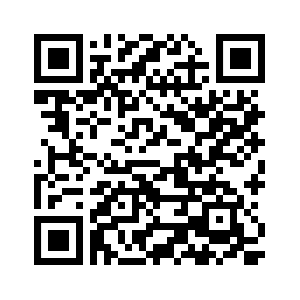The best Intraday Indicators are:
- Volume
- Moving Average Indicator for Intraday
- RSI (Relative Strength Index)
- Combination of Moving Averages and RSI
- Bollinger Bands
In our previous article, you learned how to use different intraday trading strategies to find the right entry and exit points, but that’s not enough. You gotta be double-sure before you enter or exit a trade, and for extra confirmation, we can use Technical Indicators.
In this article, let’s learn how to use the best indicators for intraday trading to make the most of your trades by entering and exiting at the right time.
Note: If you are new to Intraday Trading and have questions like, What is Intraday Trading? Is it suitable for you or not? Which strategy to use? etc. I suggest you read the following previous articles:
Content:
- What is an Indicator
- Most Accurate Intraday Trading Indicators
- Quick Summary
- FAQ(Frequently Asked Questions)
What is an Indicator?
An indicator is a mathematical calculation that is mostly based on the historic price and volume. It helps in predicting the future price of the stock, identifying entry & exit points, etc. Some of the best technical indicators for intraday trading are Volume, Moving Averages, Relative Strength Index, and Bollinger Bands.
Most Accurate Intraday Trading Indicators
- Volume
- Moving Averages
- RSI (Relative Strength Index)
- Combination of Moving Averages and RSI
- Bollinger Bands
Volume
Volume is the total quantity of shares bought and sold at a particular time. A volume is a great tool that can be used to weigh the intensity of a trend breakout, gaps, etc., and eventually, be used as an indicator of confirmation. Volume can also be used to determine the liquidity of a particular stock.
Do you know what is the volume in the stock market? Read here!
Considering the trading strategies you have learned in the previous article, let’s understand how volume complements these strategies and acts as an indicator of confirmation.
Volume in Common Gaps
As you have already learned, common gaps usually occur due to small market events and will be eventually filled during the day.
Referring to the above image, you can see there is a huge buying volume on the gap-up candle, but the next consecutive candles have selling volume, hence indicating that the gap will be eventually filled during the day.
As anticipated, at around 12 PM, the stock price reached its previous day’s close and filled the gap.
Volume in Running Gaps
Running Gaps occur in an ongoing trend. You can see in the below image the stock is already in the uptrend, and yet a gap up occurs with a bullish candle indicating a running gap up. A huge spike in the volume adds an extra pinch of confirmation.
Volume in Reversal Strategy
A huge fall or rise in the trending stocks indicates a reversal. In the above image, as you can see, the trend reverses by forming a big bearish candle; also, there is a huge spike in the volume, which confirms that it is a legit reversal. And eventually, with the trend reversal, the stock started moving downwards ever since. This is one of the best volume indicators for intraday trading.
Moving Average Indicator for Intraday
Moving averages help you determine the trend of the stock and also give you clear signs of a trend reversal. It is one of the best trend indicators for intraday. Refer to the below image to understand how moving averages work.
In the above image, as you can see, the stock is moving right above the moving average line; this indicates it is in an upward trend. As it breaks the line and starts moving below the moving average line, it indicates that the trend has reversed and the downward trend has started. This is one of the most widely used intraday trading indicators.
RSI (Relative Strength Index)
It is the best momentum indicator for intraday trading; it shows you the overbought and oversold zones of a stock. RSI has two lines, one is 80, and the other is 20. When the RSI is above 80, the stock is said to be in the overbought zone, indicating to sell. And when the RSI is below 20, the stock is said to be in the oversold zone, indicating to buy.
Once the stock reaches the overbought zone, you need to short the stock, and if the stock reaches the oversold zone, you need to buy the stock. It is one of the most widely used intraday trading indicators.
Combination of Moving Averages and RSI
Combining both Moving Averages and RSI will give you an extra edge or double confirmation over using a single indicator. Let’s understand how to use it with an example:
As you can see in the image, at a certain point, the stock is in an uptrend as it is moving right above the moving average line. Once the stock reaches the peak of an uptrend and reverses by breaking below the moving average line, you can see the RSI is also reversing from the overbought zones.
Hence a double confirmation that the stock is in the overbought zone and will eventually fall. So you gotta start selling the stock.
Bollinger Bands
It is one of the most widely used intraday trading indicators. Bollinger band consists of 3 lines; Upper Limit, Lower Limit, and a Moving Average. These lines represent the standard deviation of the stock.
In simple words, the Bollinger band looks like a cloud, and the stock is supposed to trade within this cloud. If the stock moves out of the upper limit line, it indicates that the stock prices may fall in the future. Hence you should short-sell. And if the stock moves out of the lower limit line, it indicates that the stock prices may rise in the future, indicating a buy signal.
After learning about the Best Intraday Trading Strategies and Technical Indicators, you should probably be wondering: Which stock should I use all these strategies on?
We hope that you are clear about the topic. But there is more to learn and explore when it comes to the stock market, and hence we bring you the important topics and areas that you should know:
| What is Intraday Trading |
| How to Select Stocks for Intraday |
| Best Intraday Trading Strategies |
| How to do Intraday Trading for Beginners |
| Agriculture stocks |
| Shares below 100 |
Quick Summary:
- An indicator is a mathematical calculation that is mostly based on the historic price and volume. It helps in predicting the future price of the stock.
- Volume is a great tool that can be used to weigh the intensity of a trend breakout, gaps, etc., and also can be used as an indicator of confirmation. It is one of the leading indicators for intraday trading.
- Moving averages help you determine the trend of the stock and also show you the clear signs of a trend reversal. It is one of the most widely used intraday trading indicators.
- RSI is a momentum indicator; it shows you the overbought and oversold zone of a stock.
- Combining both Moving Average and RSI will give you an extra edge or double confirmation over using a single indicator.
- Bollinger Bands give you clear signs of entry and exit points.
FAQ(Frequently Asked Questions)
1. Which Time Frame Is Best For Intraday?
The Market volatility is known to all, so you can’t really point out the best time to Intraday. But if we look closely at experts’ advice, the best time for intraday trading is between 9.30 am to 11 am.
2. Is MACD Good For Day Trading?
MACD stands for Moving Average Convergence Divergence, it is a momentum trend indicator that indicates the relationship between the moving averages of a security price. It is useful for daily, weekly, and monthly price movements but isn’t that helpful for Intraday Trading.
3. Which Is Better, EMA Or SMA?
SMA, or the Simple Moving Average, gives the average price data. And EMA or Exponential Moving Average emphasis on current data. For Intraday trading, EMA is largely preferred over SMA.
4. Which Is Better, MACD Or RSI?
Well, this is a very subjective question to answer. Some people find RSI to be more effective as it gives fewer false trading signals. And some people find MACD to be more effective as it covers a wide swinging market.







